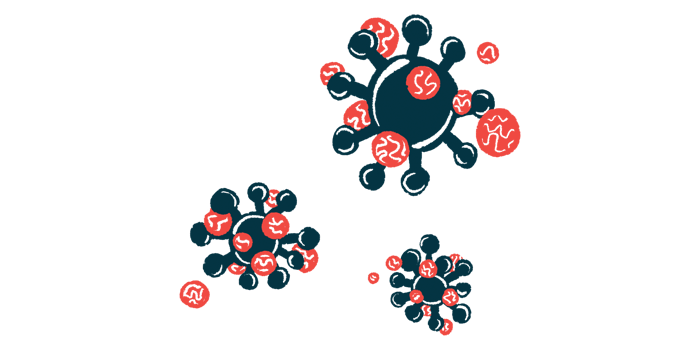Soliris Used to Treat CAD Possibly Caused by Severe COVID-19: Study

Treatment with Soliris (eculizumab) eased the symptoms of cold agglutinin disease (CAD) in a man in France who possibly developed the condition as a result of a severe infection with SARS-CoV-2, the virus that causes COVID-19, a case study reports.
While the patient ultimately died, the researchers said the study’s findings nonetheless support the use of the antibody-based therapy in severe cases of COVID-19 with CAD.
“Data regarding the specific treatment of cold agglutinin disease during COVID-19 are rare. Although additional studies are warranted, [Soliris] may be considered in critical situations,” the team wrote.
The case report, “Cold agglutinin disease secondary to severe SARS-CoV-2 treated with eculizumab,” was published in the journal BMJ Case Reports.
CAD, a form of autoimmune hemolytic anemia (AIHA), is a rare condition in which autoantibodies called cold agglutinins attack and destroy red blood cells at low temperatures. Loss of these cells causes anemia.
The man described in this case study report had a history of diabetes, high blood pressure, and cutaneous T-cell lymphoma, a rare type of blood cancer. He was treated at the hospital for acute respiratory distress syndrome (ARDS), which occurs when fluid builds up in the lungs. The patient had been experiencing cough, fever, and fatigue for the previous two weeks.
His condition prompted doctors to place him on mechanical ventilation. In addition, a PCR test came back positive for SARS-CoV-2.
Lab tests showed that his levels of hemoglobin — the protein in red blood cells responsible for oxygen transport — dropped from 109 to 80 g/L in four days and that his kidneys were failing.
Further tests revealed that he had a high lactate dehydrogenase (LDH) level of 2,072 U/L (normal value under 245 U/L) and immature red blood cell (reticulocytes) counts. He also was found to have low haptoglobin at 17 mg/dL (normal value higher than 56 mg/dL).
These were all signs of hemolytic anemia — a condition in which the abnormal rupture of red blood cells causes their levels to plummet.
Because of his kidney failure and hemolytic anemia, doctors initially suspected that his symptoms were being caused by thrombotic microangiopathy. That condition is characterized by the formation of blood clots in small blood vessels that can damage several organs in the body.
However, other manifestations associated with that disorder, such as the presence of red blood cell fragments (schistocytes), were not observed.
That led researchers to also perform a direct antiglobulin test (DAT) to detect the presence of antibodies bound to red blood cells. This test was positive for C3d complement antibodies and IgG, which indicated AIHA.
In CAD, the destruction of red blood cells is dependent on the activation of the classical complement pathway. This group of more than 30 proteins plays an important role in the body’s immune defenses.
Lower levels of C3, C4, and CH50 — molecules of the complement immune system — found in the patient’s blood suggested the activation of the complement classical pathway. Further tests looking at cold agglutinin titers — the highest antibody dilution at which red blood cell clumping occurs at low temperatures — confirmed the diagnosis of CAD.
The team then searched for viruses that are typically responsible for CAD, such as the influenza virus and the bacteria mycoplasma pneumonia, but the results came back negative. Other viruses, including hepatitis C virus and HIV, also were investigated but came back negative as well.
Treatment started with the warming of all fluids administered to the patient, including the packed red blood cells given in transfusions. The man’s health continued to worsen, however.
Rituximab, a standard CAD therapy that targets antibody-producing immune cells, was not selected because it takes too long to work. His doctors also considered plasma exchange therapy — a form of treatment that involves replacing a person’s plasma, or the liquid component of blood — but deemed it too risky.
The team ultimately decided to administer Soliris. This antibody-based therapy binds to C5, a downstream protein involved in the complement pathway, thus preventing inflammation and cell rupture.
As a result, the man’s LDH level decreased to 514 U/L and haptoglobin increased to 223 mg/dL. A blood smear examination showed no red blood cell agglutination (clumping). Additionally, hemolysis eased.
However, the patient died due to COVID-19-related ARDS with multiorgan failure.
“Although our patient died as a result of his severe COVID-19 infection, we considered the CAD episode cured due to the absence of recurrence of hemolysis,” the researchers wrote.







